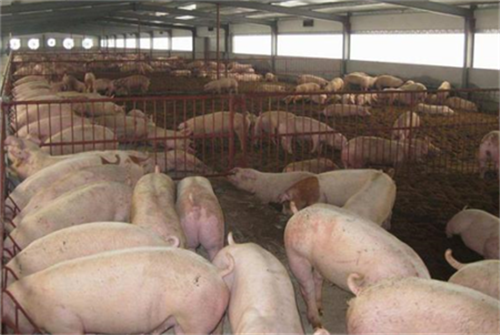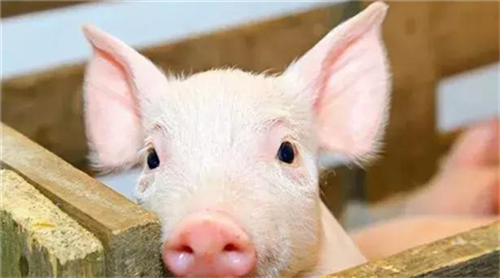What are the 6 critical periods of piglets?
There are six critical periods in piglets' life, which are closely related to the virtuous circle of good health, high-quality nutrition and effective feeding and management. Together, these links determine that the conservation stage can have a good production performance and health status.
1. Healthy sows produce the best piglets
A successful pregnancy begins in a delivery house. The feed intake of sows should be a gradually increasing process, which is conducive to the absorption of nutrients and avoid the loss of excessive weight. A sow can lose up to 10% of its body weight, because too much body loss is harmful to oocytes and affects the performance of the next fetus.
Tips
During the previous lactation period, ① gradually increased the feed intake of sows, so as to avoid excessive weight loss and recover in the following early pregnancy.
② increases the amount of drinking water of sows in the delivery house to ensure the yield of colostrum and normal milk.
③ monitors the pregnancy period according to the operating rules in order to ensure that the next baby will give birth to a better piglet.
2. Strictly abide by the rules of delivery practice.
The delivery time is no more than 5 hours, and the average interval between two piglets is 20-30 minutes, which is considered to be a good delivery process. Manual examination is required when the delivery time is too long or when the sow is still blaming. After all piglets give birth, check to see if the sows eat normal drinking water and have a fever. In addition, all piglets should eat enough colostrum.
Tips
① ensures that the delivery house is clean and hygienic
② gives sows plenty of clean drinking water
③ monitors the delivery process of sows according to the operating rules.
3. Colostrum-the most important feed for piglets
Colostrum contains energy, antibodies and other components that can help piglets grow into good fattening pigs. Energy is vital. Piglets without energy will tremble and die. Antibodies are also necessary. Piglets lack antibodies after birth, and breast milk is the only source of antibodies. To ensure that piglets get enough antibodies from colostrum is an important measure to improve the survival rate of high-yield sows and piglets. Each piglet needs to eat at least 200g colostrum to meet its needs, in which 100g colostrum is enough from the point of view of antibody demand, and other colostrum is used to supplement the energy needs of newborn piglets. For high-yielding sows, since the increase in litter size is averagely distributed to less than 200g colostrum per piglet, attention should be paid to the distribution of colostrum to ensure at least 100g colostrum intake per piglet, and then use high digestibility liquid supplement products to supplement energy needs, such as Miaoke flavor-yogurt.

Tips
① distributes colostrum equally to each piglet according to the code of practice.
② adds extra activation energy to the weak.
4. The best use of breast milk
After ingesting colostrum, it is critical that each piglet is assigned a functioning nipple. The more effective nipples in sows, the more piglets can be fed. When the number of piglets is more than the number of effective nipples, the best way is to cross-foster and mark each piglet according to the code of practice. It is important to properly record and evaluate your cross-foster care process.
Tips
① allows all piglets to stay with their mothers unless the number of piglets exceeds the effective nipple number of sows.
According to the ② Code of practice, heavier piglets are cross-foster within 48 hours after birth.
③ when cross-foster care is not feasible, find a new foster sow.
5. A good start begins with replenishment
In addition to breast milk, it is very important for piglets to eat a large amount of solid feed before weaning, because their gastrointestinal tract should adapt to feed intake and digestion after weaning. During this period, it is also crucial for sows to teach piglets how to feed.
Tips
① is supplemented with Miaoke flavor products in addition to breast milk, so as to stimulate early feeding, improve digestion and help intestinal development.
② trains piglets to feed according to the operating rules.
③ keeps the feed trough clean in order to promote piglet intake.
6. Smooth weaning
The weaning process is very stressful for piglets because they are separated from their mothers and need to feed and drink on their own. In addition, there is a need to establish a new hierarchy among animals in the new barracks, which could potentially lead to piglets fighting. Therefore, extra attention needs to be paid to the feeding and drinking water of piglets in the first few days after weaning. The ideal picture is to be able to see piglets eating together many times a day.
Tips
According to the Code of practice, ① guarantees to eat Miaoke flavor products after weaning as before weaning.
In the first few days after weaning, ② used a circular sink to replenish extra water for piglets.
③ ensures proper temperature and ventilation in the nursery
④ minimizes stress factors after weaning.
- Prev

How many key steps do you take to raise a good nursery pig?
How many key steps do you take to raise a good nursery pig?
- Next

Don't be careless in raising sows. Pig breeders learn these three skills to increase benefits immediately.
Don't be careless in raising sows. Pig breeders learn these three skills to increase benefits immediately.
Related
- On the eggshell is a badge full of pride. British Poultry Egg Market and Consumer observation
- British study: 72% of Britons are willing to buy native eggs raised by insects
- Guidelines for friendly egg production revised the increase of space in chicken sheds can not be forced to change feathers and lay eggs.
- Risk of delay in customs clearance Australia suspends lobster exports to China
- Pig semen-the Vector of virus Transmission (4)
- Pig semen-the Vector of virus Transmission (3)
- Five common causes of difficult control of classical swine fever in clinic and their countermeasures
- Foot-and-mouth disease is the most effective way to prevent it!
- PED is the number one killer of piglets and has to be guarded against in autumn and winter.
- What is "yellow fat pig"? Have you ever heard the pig collector talk about "yellow fat pig"?

